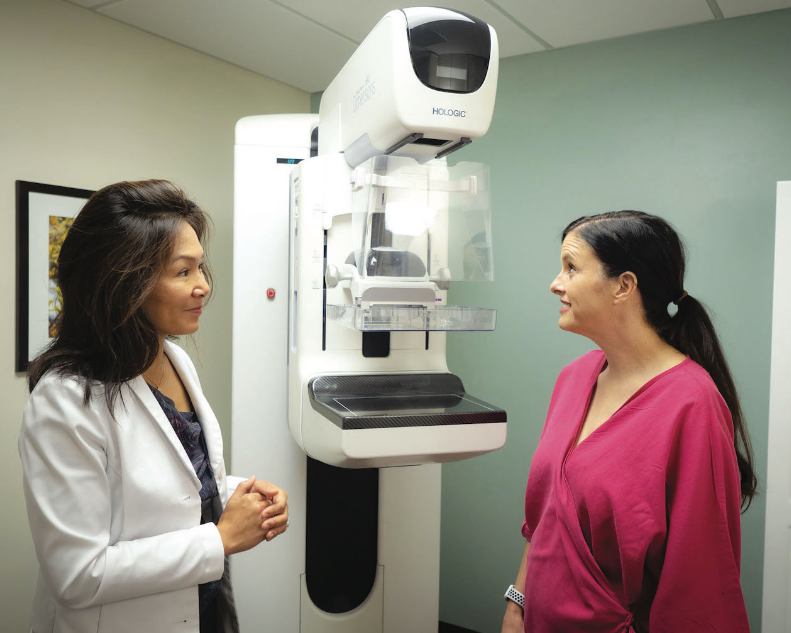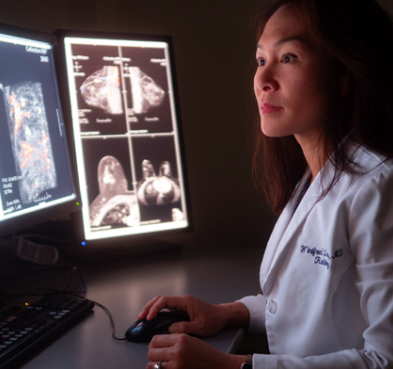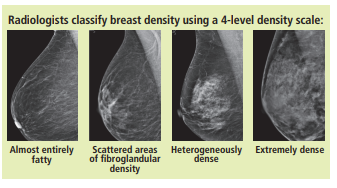Jul 24, 2023, 10:32
by
May 2023 Good Health digital edition
 In a March 2023 update to its mammography regulations, the FDA announced it will now require healthcare facilities to notify patients across the nation about the density of their breasts. This move from the FDA broadens patients’ access to breast density information across states that did not previously have such legislation. California was one of the earliest states to adopt breast density notification, and in 2013, it mandated that healthcare providers inform patients if their breast tissue is dense in order to increase awareness.
In a March 2023 update to its mammography regulations, the FDA announced it will now require healthcare facilities to notify patients across the nation about the density of their breasts. This move from the FDA broadens patients’ access to breast density information across states that did not previously have such legislation. California was one of the earliest states to adopt breast density notification, and in 2013, it mandated that healthcare providers inform patients if their breast tissue is dense in order to increase awareness.
At Sansum Clinic’s Breast Imaging Center of Excellence, all patients are notified of their breast density with their mammography results, both in a letter and via MyChart.
Sansum Clinic’s fellowship-trained breast radiologist Winifred Leung, MD explains our process to identify and notify patients about their breast density, and the options available for additional screening.
What does it mean to have dense breasts?
Breast density refers to the amount of fibrous and glandular tissue in the breast, in comparison to the amount of fatty tissue on a radiograph. (Fibrous tissue holds the breast tissue in place. Glandular tissue is the part of the breast that makes milk. Fatty tissue fills the space in between the fibrous tissues, lobes and ducts, and it gives breasts their size and shape. ) Dense breasts have high amounts of glandular and fibrous tissue, appearing white on mammography, making it harder to spot/locate potential breast cancer.
Why is breast density important? 
Beyond the obscuring effects of breast density making mammography more difficult to interpret, dense breast tissue is a “moderate” risk factor for cancer. Family history of breast cancer and personal history of breast tumors, cancerous or benign, are stronger risk factors than dense breasts.
How do I know if I have dense breasts?
You can’t gauge breast density by the feel of your breasts even if they feel lumpy or ropey or tender. Breast density can only be determined by a mammogram. Additionally, having dense breast tissue is not abnormal and is, in fact, quite common. Approximately 40% of all women have dense breasts.
Is having dense breasts a temporary condition, or will I always have it?
The density of your breasts can change over time depending on age and hormonal changes.
Are there certain groups more at risk for dense breasts?
You are more likely to have dense breasts if you are pregnant or breastfeeding, are premenopausal, are taking hormone replacement therapy, or have a low body mass index (BMI).
What should I do If I have dense breasts?

Talk to your radiologist or healthcare provider about your breast density and your personal risk of getting breast cancer. He or she can help you make informed decisions about personalized screening, to determine if an annual mammogram is enough screening, or if you might benefit from additional imaging, including whole-breast ultrasound or high-risk screening MRI.
Depending on your mammogram results and your personal risk of breast cancer, your healthcare provider might recommend a whole-breast ultrasound or a high-risk screening MRI, as an additional way to look at breast tissue. Because those types of tests might not be covered by health insurance in every case, your healthcare provider may only recommend further breast imaging if or when something concerning is noticed.
When should women start getting mammograms?
In line with the American College of Radiology (ACR) guidelines, Sansum Clinic recommends yearly mammography for women with average risk, starting at age 40. Mammography is safe and effective during pregnancy and breastfeeding. Doctors may recommend starting mammography before age 40, or may recommend additional breast screening, based on personal and family history. At Sansum Clinic, mammography is performed exclusively with 3D mammography (also known as tomosynthesis) which is the most advanced screening and diagnostic tool available for detecting breast cancer. A 3D mammogram allows doctors to examine your breast tissue layer by layer, where all of the fine details are more visible and no longer hidden by the tissue above and below, compared with conventional 2D mammography which views all of the complexities of your breast in a flat image.
To learn more about Sansum Clinic’s Breast Imaging Center of Excellence, or to schedule a mammogram, click here or visit breastimaging.sansumclinic.org.
Photo captions: (top) Dr. Leung and patient, (middle) Dr. Leung reading a breast scan, (bottom) American College of Radiology, courtesy photo.